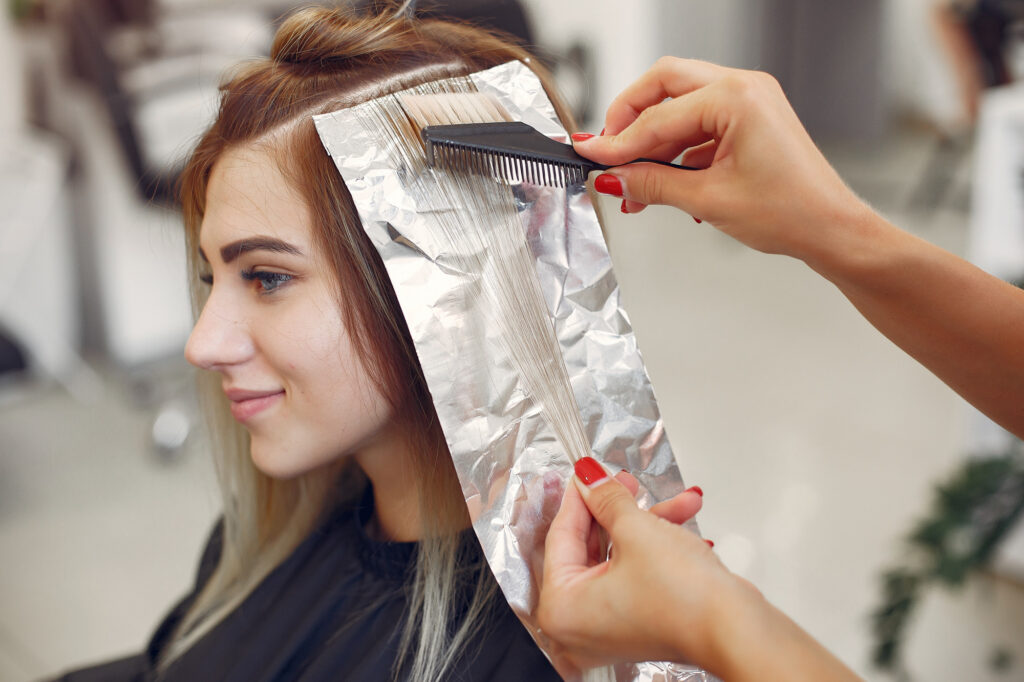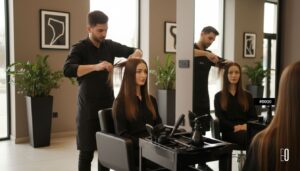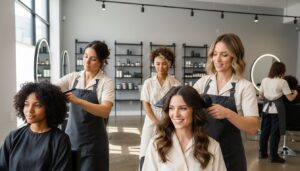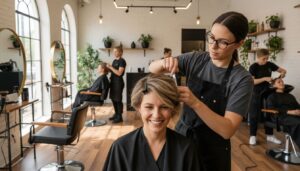Unhealthy hair often sends out warning signals long before major problems appear. Most people focus on what products to use or which salon to visit, but one number gets ignored. Chronic dryness is one of the main indicators of poor hair health, yet almost 60 percent of adults don’t recognize this early symptom. That early neglect lets small issues quietly turn into big damage, surprising almost everyone when hair starts to dull and break.
Table of Contents
- What Are The Signs Of Unhealthy Hair?
- Why Recognizing Unhealthy Hair Matters
- How Environmental Factors Affect Hair Health
- Understanding Hair Nutrition And Care
- The Impact Of Stress And Lifestyle On Hair Quality
Quick Summary
| Takeaway | Explanation |
|---|---|
| Identify signs of unhealthy hair early | Look for split ends, dullness, and rough texture to catch issues before they worsen. |
| Monitor scalp health regularly | Persistent dandruff or irritation may indicate deeper nutritional or medical concerns needing attention. |
| Consider nutrition’s role in hair health | A diet rich in proteins, vitamins, and minerals supports strong, healthy hair growth and prevents deterioration. |
| Address environmental impacts on hair | Protect hair from UV rays and pollution to maintain its health and prevent damage caused by external factors. |
| Manage stress to preserve hair quality | Stress can disrupt hair growth; techniques like mindfulness and exercise can help mitigate negative effects. |
What Are the Signs of Unhealthy Hair?
Recognizing the signs of unhealthy hair is crucial for maintaining vibrant, strong, and beautiful hairstyles. Hair health reflects not just aesthetic appearance but also overall physiological well-being. Understanding these signs allows individuals to take proactive steps toward hair restoration and prevention.
Visual and Textural Indicators of Hair Damage
Healthy hair exhibits a natural shine, smooth texture, and resilient structure. When hair becomes unhealthy, several noticeable changes occur. According to Mount Sinai Hospital, key visual signs include:
- Excessive split ends and fraying
- Visible breakage and brittleness
- Dull, lackluster appearance lacking natural sheen
- Rough or coarse texture that feels dry to touch
These physical transformations often signal underlying issues related to nutrition, hair care practices, or potential medical conditions. Professional stylists can quickly identify these symptoms during routine consultations.
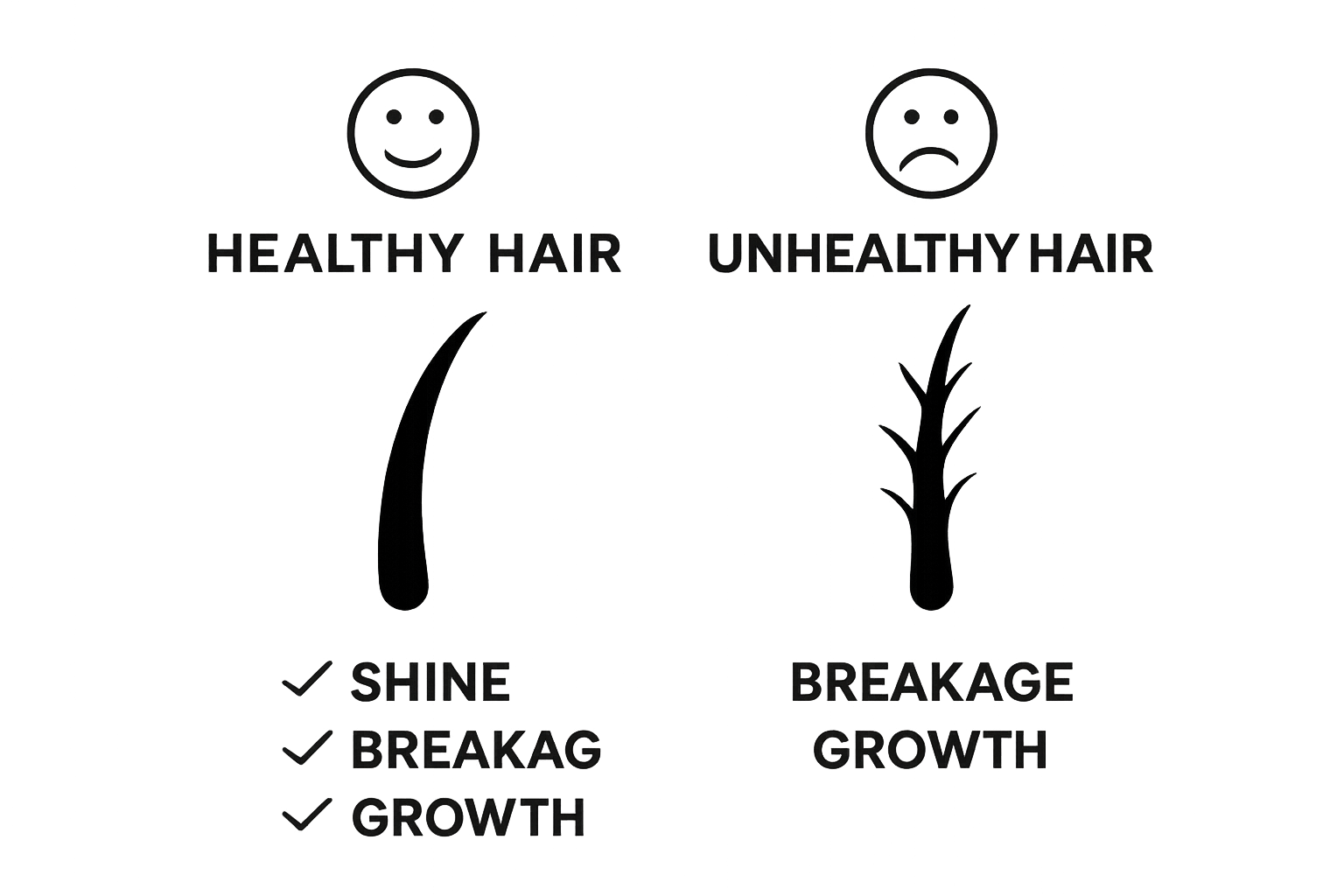
Scalp and Hair Growth Signals
Unhealthy hair extends beyond surface-level damage. The scalp provides critical insights into hair condition. Centers for Disease Control and Prevention highlights that inadequate hair hygiene can lead to significant problems such as:
- Persistent dandruff or scalp irritation
- Increased hair shedding beyond normal ranges
- Unusual oiliness or excessive dryness
- Slow or stunted hair growth patterns
These symptoms might indicate deeper issues like nutritional deficiencies, hormonal imbalances, or potential scalp infections. Professional assessment becomes essential when these signs persist.
Moisture and Structural Integrity
Moisture balance represents a fundamental aspect of hair health. Chronically dry hair signals potential nutritional or environmental stress. When hair loses its natural moisture, it becomes prone to damage, breakage, and accelerated aging. Understanding these signs empowers individuals to adjust their hair care routines, select appropriate treatments, and restore hair’s natural vitality.
By recognizing these signs early, individuals can take proactive steps to prevent further damage and maintain luxurious, healthy hair.
This table outlines the core signs of unhealthy hair, categorizing them by visual, scalp, and moisture-related indicators for clearer recognition and understanding.
| Category | Sign of Unhealthy Hair | Description |
|---|---|---|
| Visual/Textural | Split ends and fraying | Ends appear ragged; increased breakage risk |
| Visual/Textural | Dull, lackluster appearance | Lacks natural shine and reflective quality |
| Visual/Textural | Rough or coarse texture | Feels dry to the touch; lacks smoothness |
| Scalp/Growth | Persistent dandruff or irritation | Itchy, flaky scalp; may indicate deeper issues |
| Scalp/Growth | Increased hair shedding | More hair loss than usual during brushing/washing |
| Moisture/Structural | Excessive dryness | Hair loses moisture, becoming brittle and damaged |
| Scalp/Growth | Unusual oiliness or excessive dryness | Scalp feels too greasy or too dry; disrupts balance |
Why Recognizing Unhealthy Hair Matters
Understanding the significance of identifying unhealthy hair transcends mere cosmetic concerns. Hair health represents a critical indicator of overall physiological well-being, providing insights into nutrition, stress levels, and potential underlying medical conditions. Proactive recognition allows individuals to intervene before permanent damage occurs.
Long-Term Hair and Scalp Health Implications
Early detection of hair health issues prevents progressive deterioration and potential irreversible damage. According to International Journal of Trichology, recognizing signs of hair shaft disorders enables timely interventions that can:
- Preserve natural hair structure
- Prevent extensive breakage
- Maintain scalp ecosystem balance
- Minimize potential permanent hair loss
Proactive monitoring becomes a critical strategy for maintaining hair quality and preventing significant aesthetic and structural compromises. Professional consultations can transform potential long-term damage into manageable, treatable conditions.
Psychological and Aesthetic Considerations
Hair health directly impacts personal confidence and self-perception. Unhealthy hair can trigger psychological distress, reducing individual comfort in social and professional environments. The visual representation of hair significantly influences personal presentation and perceived attractiveness.
Recognizing hair health indicators allows individuals to:
- Restore hair’s natural vibrancy
- Rebuild self-confidence
- Develop personalized hair care strategies
- Prevent progressive aesthetic deterioration
Comprehensive Health Diagnostics
Hair condition often reflects broader health narratives. Unusual hair characteristics can signal nutritional deficiencies, hormonal imbalances, or systemic health challenges. Professional assessment transforms hair analysis from a cosmetic evaluation into a comprehensive health diagnostic tool.
By understanding these interconnections, individuals gain powerful insights into their overall physiological well-being, enabling more holistic approaches to personal health management.
How Environmental Factors Affect Hair Health
Environmental influences play a profound role in determining hair health, transforming external conditions into direct impacts on hair structure, appearance, and resilience. Understanding these interactions helps individuals protect their hair from potential damage and maintain its natural vitality.
Ultraviolet and Radiation Exposure
Direct sunlight and environmental radiation represent significant threats to hair integrity. According to International Journal of Trichology, prolonged exposure can cause systematic protein and lipid degradation within hair fibers. Ultraviolet radiation penetrates hair cuticles, causing structural breakdown and manifesting through:
- Increased hair porosity
- Accelerated color fading
- Reduced natural protein bonds
- Compromised hair elasticity
These changes transform hair from healthy and resilient to fragile and prone to breakage. Protective strategies become essential for maintaining hair quality in high-radiation environments.
Pollution and Atmospheric Contaminants
Urban environments expose hair to complex chemical interactions with atmospheric pollutants. Industrial emissions, vehicle exhaust, and particulate matter create microscopic damage mechanisms that gradually deteriorate hair quality. Pollutants coat hair strands, blocking natural moisture and creating a barrier against healthy regeneration.
Significant environmental impacts include:
- Accumulation of toxic microparticles
- Disruption of natural hair protein structure
- Increased oxidative stress
- Accelerated aging of hair follicles
Humidity and Temperature Variations
Climate plays a crucial role in hair health, with humidity and temperature creating dynamic stress environments. Extreme conditions challenge hair’s natural protective mechanisms, causing structural transformations that compromise aesthetic and functional qualities.
Temperature fluctuations and moisture levels directly influence hair’s molecular structure, creating challenges for maintaining consistent hair appearance. Individuals living in regions with dramatic climate shifts must develop adaptive hair care strategies that protect against environmental stress.
The following table summarizes the major environmental factors discussed in the article and their specific impacts on hair health for easy comparison and reference.
| Environmental Factor | Impact on Hair Health | Key Manifestations |
|---|---|---|
| Ultraviolet/Radiation | Causes protein and lipid degradation, weakens hair structure | Increased porosity, color fading, brittleness |
| Pollution/Contaminants | Coats hair strands, increases oxidative stress | Dryness, blocked moisture, dullness |
| Humidity & Temperature | Disrupts moisture balance, stresses hair at the molecular level | Frizz, structural changes, inconsistent texture |
By comprehensively understanding these environmental interactions, people can develop targeted protection strategies, preserving hair health and maintaining its natural beauty across diverse conditions.
Understanding Hair Nutrition and Care
Nutrition plays a pivotal role in maintaining healthy hair, serving as the fundamental building block for hair growth, strength, and overall appearance. Understanding the intricate relationship between dietary intake and hair health enables individuals to develop comprehensive strategies for achieving luxurious, resilient hairstyles.
Essential Nutritional Components
Hair requires a complex array of nutrients to maintain its structural integrity and growth potential. According to International Journal of Trichology, critical nutritional elements directly influence hair follicle function and fiber composition. Key nutritional requirements include:
- High-quality proteins for keratin production
- Vitamins A, C, D, and B-complex for cellular regeneration
- Minerals like iron, zinc, and selenium for follicle health
- Essential fatty acids supporting scalp and hair moisture
Nutritional deficiencies manifest through visible changes in hair texture, growth rate, and overall health. Professional nutritional guidance can help individuals develop targeted dietary approaches to support optimal hair condition.
Dietary Impact on Hair Structure
Malnutrition creates cascading effects on hair quality, transforming healthy strands into fragile, brittle structures. Insufficient nutrient intake disrupts natural hair growth cycles, potentially leading to:
- Increased hair shedding
- Reduced hair diameter
- Slower growth rates
- Compromised hair strength
Individuals experiencing persistent hair health challenges must consider comprehensive nutritional assessments to identify potential underlying dietary imbalances.
Holistic Hair Care Strategies
Nutrition represents only one component of comprehensive hair care. Integrating dietary considerations with appropriate external care creates a synergistic approach to maintaining hair health. This holistic strategy involves balancing nutritional intake with:
- Gentle hair washing techniques
- Minimizing heat and chemical treatments
- Regular scalp maintenance
- Personalized hair care product selection
By understanding the intricate connections between nutrition, external care, and hair health, individuals can develop sophisticated approaches to maintaining vibrant, resilient hair that reflects overall physiological well-being.
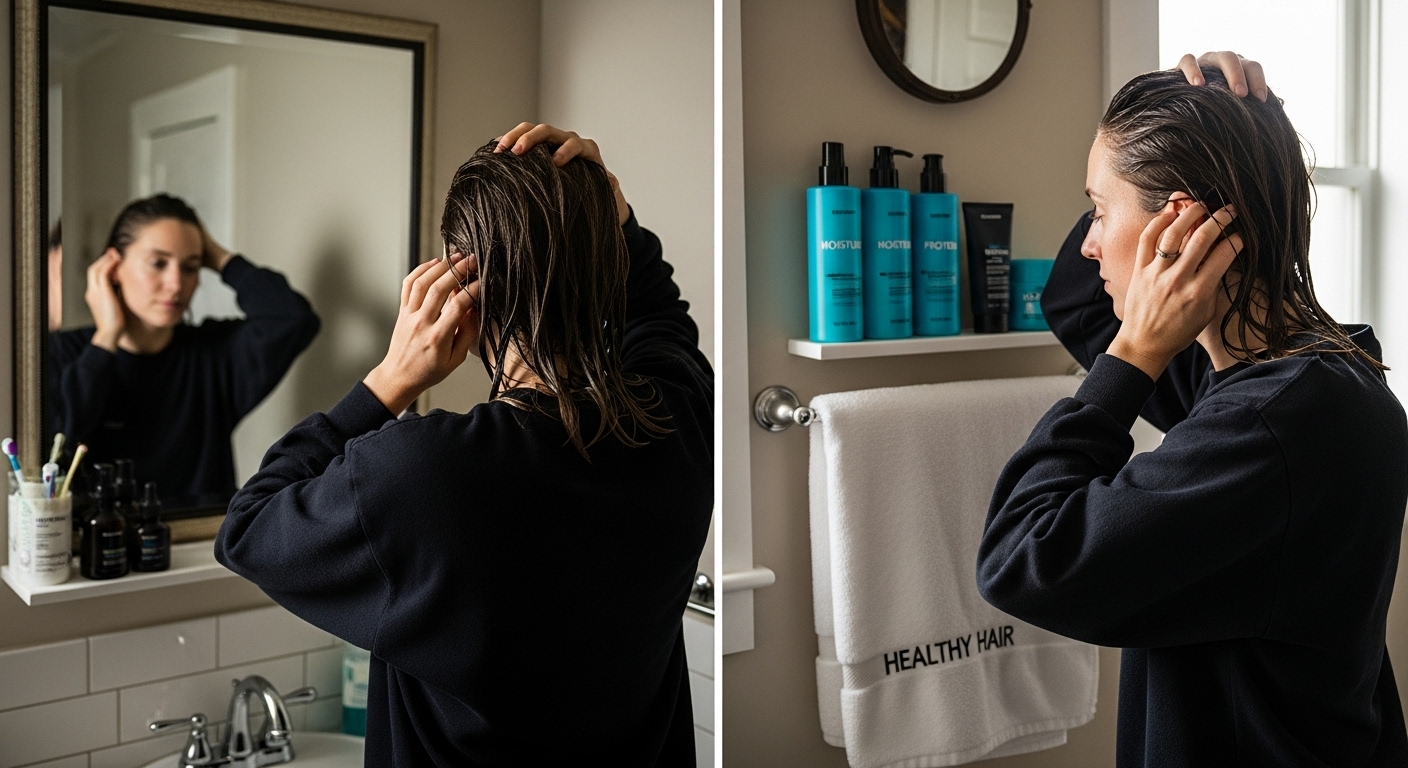
The Impact of Stress and Lifestyle on Hair Quality
Stress and lifestyle factors wield profound influence over hair health, creating complex physiological responses that directly impact hair growth, texture, and overall appearance. Understanding these intricate connections helps individuals develop comprehensive strategies for maintaining vibrant, resilient hair.
Physiological Stress Mechanisms
According to National Institutes of Health Research, chronic stress triggers multiple biochemical cascades that disrupt normal hair growth cycles. Psychological and physical stress manifest through various hair health complications:
- Increased cortisol production
- Disruption of hair follicle regeneration
- Acceleration of premature hair aging
- Compromised scalp microenvironment
The body’s stress response redirects energy away from hair growth, prioritizing survival mechanisms and creating potential long-term hair quality challenges. Professional stress management becomes crucial for maintaining optimal hair health.
Lifestyle Factors and Hair Resilience
Lifestyle choices create cumulative effects on hair structure and growth potential. Factors such as sleep quality, nutrition, physical activity, and daily habits significantly influence hair follicle performance. Detrimental lifestyle patterns can lead to:
- Reduced hair thickness
- Increased oxidative stress
- Impaired nutrient absorption
- Weakened hair protein structure
Individuals experiencing persistent hair quality issues must evaluate their holistic lifestyle approach, recognizing the interconnectedness of physical well-being and hair health.
Psychological Well-Being and Hair Quality
Psychological state directly correlates with hair health, creating a complex feedback loop between mental wellness and physical appearance. Chronic stress triggers physiological responses that manifest through visible hair changes, potentially creating additional psychological strain.
Developing comprehensive stress management strategies becomes essential for maintaining both mental equilibrium and hair vitality. Approaches like mindfulness, regular exercise, adequate sleep, and professional counseling can help mitigate stress-induced hair health challenges.
By understanding the intricate relationship between stress, lifestyle, and hair quality, individuals can develop targeted interventions that support both psychological well-being and hair resilience.
Transform Your Hair Health Into True Luxury
Do you recognize dullness, breakage, or changes in your scalp that reflect the warning signs discussed above? If you are starting to notice fraying ends or a lack of shine, your hair could be signaling deeper issues with texture, nutrition, or stress. Taking proactive steps now is essential to restore your hair’s resilience and maintain the luxurious look you deserve. Find more insights and tips in our Uncategorized Archives – Joel C Ma Hair Studio for ongoing hair care support.
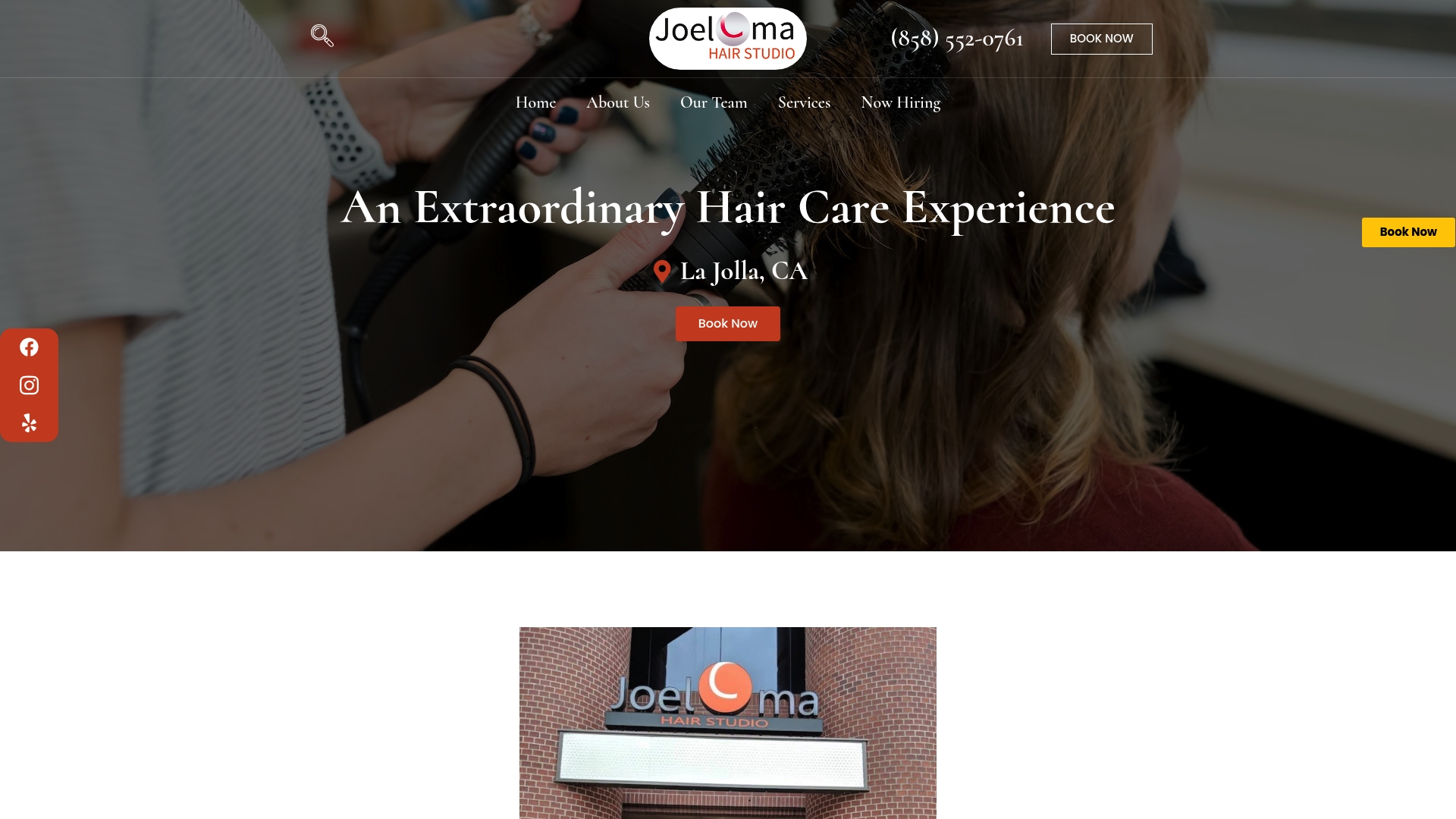
Experience how expert-led care turns unhealthy hair into art. Book a personalized consultation with our team at Joel C Ma Hair Studio and enjoy tailored solutions crafted by hair artists with over 25 years of experience. Don’t wait for further damage—unlock the healthiest, most beautiful version of your hair by choosing premium artistry and proven techniques. Visit our homepage now to discover our full list of services and secure your appointment today.
Frequently Asked Questions
What are the signs of unhealthy hair?
Signs of unhealthy hair include excessive split ends, visible breakage, a dull appearance, and a rough or coarse texture. You may also notice increased hair shedding or scalp irritation.
How does nutrition affect the health of my hair?
Nutrition plays a crucial role in hair health. Deficiencies in proteins, vitamins, and essential fatty acids can lead to hair loss, increased brittleness, and diminished overall texture and growth.
What lifestyle factors can impact hair quality?
Lifestyle factors such as stress, sleep quality, and nutrition directly affect hair health. Chronic stress can lead to hair thinning and loss, while a balanced diet promotes healthy hair growth.
How can I protect my hair from environmental damage?
To protect your hair from environmental damage, consider avoiding excessive sun exposure, using protective hair care products, and maintaining good scalp hygiene to combat pollutants and UV damage.
Recommended
- Understanding Healthy Hair Habits for Luxurious Locks – Joel C Ma Hair Studio
- Uncategorized Archives – Joel C Ma Hair Studio
- Healthy Eating for Hair: Nourish Your Look in La Jolla – Joel C Ma Hair Studio
- What is a Hair Glaze? Understanding its Benefits and Use – Joel C Ma Hair Studio
- 5 Tips for Healthy Hair: Easy Steps for Shiny, Strong Locks | MyHair | MyHair


